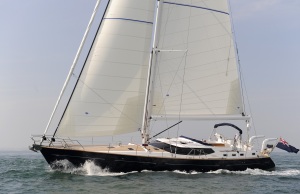
To be able to sail, you must understand the wind. Sounds simple? But by knowing from where, and how strong the wind is blowing, you can react to the conditions around you when you’re on the water.
Direction
Winds are named from the direction they blow from. A wind blowing from the north to the south is a north wind. But the wind never flows in a steady direction so you need to keep track of what its doing and change your behaviour accordingly.
Clues are all around you – waves are pushed along by the wind but it is the ripples on a waters surface that show the direction of the wind. Look for leaves, sand or anything that can be blown. Moored boats will swing to point into the wind, unless influenced by currents. Light shallow boats are the best indicators. When all else fails, face the direction of the wind, turning your head slowly from side to side. You’ll soon notice the sensations on your skin. Practice this technique and it will soon become second nature.
Terms
The world of a sailor is divided into two halves: everything toward it and everything away from it. Looking into the wind is ‘upwind’ and turning your back on it is ‘downwind’ – up and down, or ‘windward’ and ‘leeward’.
Anything upwind of you begins with the word ‘weather’. Anything downwind of you is prefaced by ‘lee’. Sailing on the wind means you are in a windward direction. Sailing off the wind means you are heading in a leeward direction.
Different winds
There are two types of winds in sailing, true and apparent. A true wind is what you feel when sitting on a moored boat. The wind you feel when moving, is what is called an apparent wind. The wind indicators on a boat when it is sailing is apparent wind. You can adjust your sails to the apparent wind but not true.
Forecasts
Most sailors will rely on forecasts from the Met Office. These forecasts are broadcast on the radio. Gale warnings are broadcast at the earliest opportunity, and radio 3 and 4 broadcast inshore waters forecasts. Imminent means within 6 hours and good means visibility over 5 miles. Quickly means a barometer dropping up to 6.Omb in 3 hours. As wind is so unpredictable and immediate, these weather reports should not be relied on 100%.
Sailing into the wind
A sail boat cannot sail into the wind, but it can get there indirectly. By sailing close to the wind in one direction, and then changing course to sail as close to the wind as possible in the other direction, you can zig zag to your destination. This is known as ‘beating’ or ‘working to windward’. Changing direction is known as ‘tacking’ or ‘coming about’.